 |
| Image by Loui Jover |
Excerpt from AvaSykes.com
Ten a.m. came with the expected physical signs:
burning eyes, stiff neck, headache. Oh, boy. My palms were sweating as
I walked to the podium, footsteps echoing through the virtually empty UCLA
lecture hall. That was a plus. It lessened the potential for public
humiliation. The only seats occupied were the front two rows. I squeezed my
eyes shut a few times, trying to alleviate the sting ... eye drops might have
helped, along with fresh contacts. They were prescription, for my mixed
astigmatism, a near-far sighted combo, and tinted to keep down the glare. I had
partial colour blindness too, but that’s another story. Bottom line, sleep
deprivation wasn’t a good look. Hopefully, the examiners would be glued to the
screen, and my riveting presentation, not my tired face.
It took a minute to password my way through
security, log into my CloudBox — and bring up the visuals. I synched with the
screen behind me and cleared my throat. ‘Good morning, faculty.’ My voice broke
and I tried to humph without sounding like a cat coughing up a fur ball.
This was not my favourite part of being fourth year: standing in front of a
critical audience, my knowledge and abilities in question. Who in their right
mind would want to try and explain auto-immune disorders to a group of
scientists who knew hundreds of times more about the subject than anyone
alive?
The mic gave an ear-piercing screech as I
adjusted it, which didn’t help to calm me down. The lights dimmed and the large
screen illuminated. The glare was so strong, I couldn’t read the notes on my
tablet. Perfect. I sucked in a deep breath, and ploughed on.
‘Since the first wave of the Aftermath, auto-immune
disorders have escalated, not just here in LA, but globally. These diseases
cross all borders, cultures and peoples, targeting young and old alike. The
epidemiology is hard to trace, but at its core is a potentially fatal flaw ...’
I choked on that. This topic got under my skin because I had one of those pesky
flaws myself. At times like these, I could almost hear the clock ticking. I
cleared my throat. ‘ … a potentially fatal flaw in the evolution of the human
genome. Constant bombardment from microwaves, radiation and carcinogenic
substances has caused an abnormal gene expression, including the conditional
deletion of the Bcl-x gene from red blood cells, which becomes apparent when
the body loses its ability to tell the difference between self and non-self.’
I swiped the small screen on the podium,
bringing up the next visual behind me. It showed a clip of a blood clot forming
at 500x magnification, courtesy of APS — antiphospholipid antibody syndrome —
in action. As I talked about causes and potential cures, moving on to my personal
favourite, hemolytic anemia and its variants under the umbrella of AADD —
Aftermath associated degenerative diseases — my eyes came back to one of the
examiners. I’d never seen him before, which wasn’t uncommon. UCLA hosted the
largest science campus in the western US, and specialists in the field were
invited in to evaluate fourth year students, especially ones like me who hoped
to land an internship with the LA branch of the CDC, the Centre for Disease
Control. This guy looked too young though. Maybe an intern auditing my talk? Who
are you?
The thought floated through my head. Not a welcome
distraction. Every time I looked, he was staring at me, his expression a cross
between curious and accusatory. It raised the hairs on the back of my neck. Oh,
hell! I had the freaking wrong slide up. I pulled my focus back to the
presentation and kept my gaze well away from handsome mystery man in seat A15.
Sure, it registered. Handsome.
Not helping.
Twenty minutes later, the lights went up and
there was a brief, but slightly more than perfunctory, applause. On a scale of
one to ten, for senior lecturers that was at least a nine, nearly a standing
ovation. It made me smile, and in a momentary lapse, my eyes drifted back to
seat A15. Big mistake. The floor was open to questions, and he took it as a
personal invitation.
‘You mention the fatigue associated with
auto-immune hepatitis. What test would differentiate auto-immune liver disease
from other hepatic disorders?’
I swallowed hard, not because I didn’t have a
damn good answer, but because his eyes were boring into me. Almond-shaped dark
eyes. They had a wild look, or was that the unruly hair? It was like being on a
witness stand, which I guess was the point of the exercise. He wasn’t coming
across as an intern. His voice was too confident. I reviewed the role of
typical histological findings in both AILD and other chronic liver diseases,
finishing with a discussion of immunoglobulins and various
triggers for immune response. He questioned again, and for a while, we had our own private ping-pong match going on. Then others had comments and questions for me and, while I engaged, out of the corner of my eye I saw him check his phone. He nodded vaguely in my direction and left. As he walked out of the hall, a lingering thought again floated through my head.
triggers for immune response. He questioned again, and for a while, we had our own private ping-pong match going on. Then others had comments and questions for me and, while I engaged, out of the corner of my eye I saw him check his phone. He nodded vaguely in my direction and left. As he walked out of the hall, a lingering thought again floated through my head.
Who are you?
***
From #TheBoodInTheBeginning An #AvaSykes #Novel
Read more ...
I'd love to hear who your fav characters are that DON'T enjoy public speaking! --Kim
 Kim Falconer is a Supernatural Underground author writing urban fantasy, paranormal romance, YA and epic science fantasy novels.
Kim Falconer is a Supernatural Underground author writing urban fantasy, paranormal romance, YA and epic science fantasy novels. You can find out more about Kim at AvaSykes.com, the 11th House Blog, and on FaceBook and Twitter.
She posts here at the Supernatural Underground on the 16th of every month and runs Save the Day Writer's Community on Facebook and GoodVibeAstrology.com.





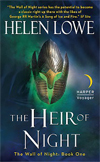
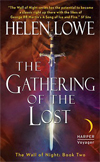


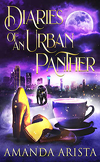



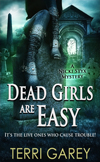

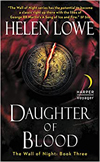
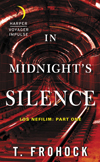



No comments:
Post a Comment